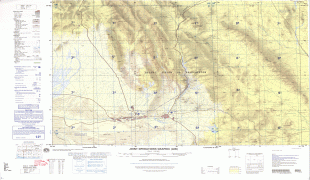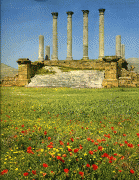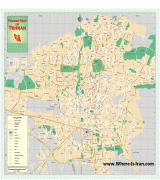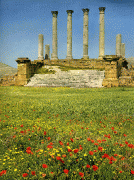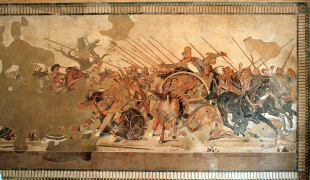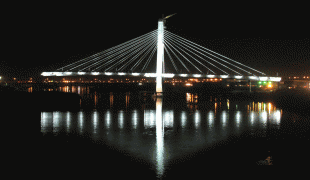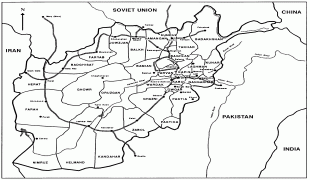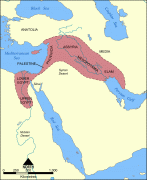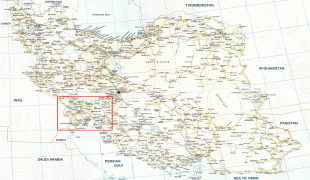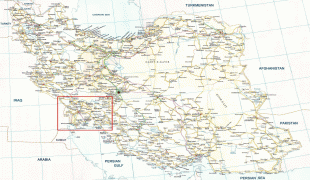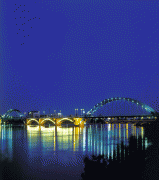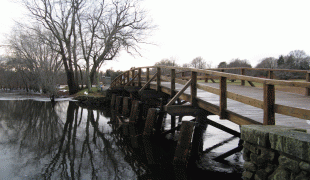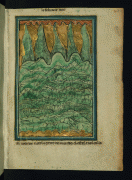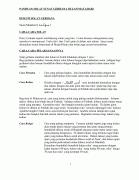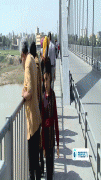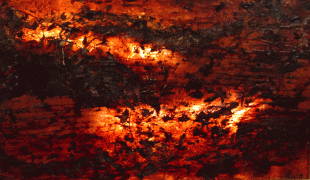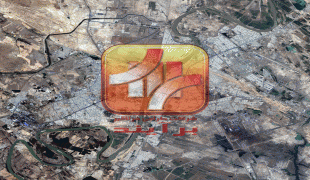Ahvaz
Ahvaz is a city in the southwest of Iran and the capital of Khuzestan province. Ahvaz's population is about 1,300,000 and its built-up area with the nearby town of Sheybani is home to 1,136,989 inhabitants. It is home to Persians, Arabs, Bakhtiaris, Dezfulis, Shushtaris, and others. Languages spoken in the area include Persian and Arabic, as well as dialects of Luri (Bakhtiari), Dezfuli, Shushtari, and others.
One of the 2 navigable rivers of Iran alongside the Arvand Rud (Shatt al-Arab), the Karun, passes through the middle of the city. Ahvaz has a long history, dating back to the Achaemenid period. In ancient times, the city was one of the main centers of the Academy of Gondishapur.
The word Ahvaz is a Persianized form of the Arabic "Ahwaz," which, in turn, is derived from an older Persian word. The Dehkhoda Dictionary specifically defines the "Suq-al-Ahvaz" as "Market of the Khuzis", where "Suq" is the Elamite word for market, and "Ahvaz" is a broken plural (اسم جمع) of the form "af'āl" (افعال) of the word "Huz" or "هوز", which itself comes from the Persian Huz, from Achaemenid inscriptions where the term first appears. Thus, "Ahvaz" in Persian means "the Huz-i people", which refers to the Khuzi original inhabitants of Khūzestān.
The name of the region appears in medieval Syriac sources as ܒܝܬ ܗܘܙܝܐ Beṯ Huzáyé, literally meaning "land of the Huzis".
The term "Huz", meanwhile, is the Old Persian rendition of Suz (Susa-Susiana), the native Elamite name of the region. See Origin of the name Khuzestan and Elam for more details.
One of the 2 navigable rivers of Iran alongside the Arvand Rud (Shatt al-Arab), the Karun, passes through the middle of the city. Ahvaz has a long history, dating back to the Achaemenid period. In ancient times, the city was one of the main centers of the Academy of Gondishapur.
The word Ahvaz is a Persianized form of the Arabic "Ahwaz," which, in turn, is derived from an older Persian word. The Dehkhoda Dictionary specifically defines the "Suq-al-Ahvaz" as "Market of the Khuzis", where "Suq" is the Elamite word for market, and "Ahvaz" is a broken plural (اسم جمع) of the form "af'āl" (افعال) of the word "Huz" or "هوز", which itself comes from the Persian Huz, from Achaemenid inscriptions where the term first appears. Thus, "Ahvaz" in Persian means "the Huz-i people", which refers to the Khuzi original inhabitants of Khūzestān.
The name of the region appears in medieval Syriac sources as ܒܝܬ ܗܘܙܝܐ Beṯ Huzáyé, literally meaning "land of the Huzis".
The term "Huz", meanwhile, is the Old Persian rendition of Suz (Susa-Susiana), the native Elamite name of the region. See Origin of the name Khuzestan and Elam for more details.
Map - Ahvaz
Map
Country - Iran
 |
 |
| Flag of Iran | |
The country is home to one of the world's oldest civilizations, beginning with the formation of the Elamite kingdoms in the fourth millennium BC. It was first unified by the Medes, an ancient Iranian people, in the seventh century BC, and reached its territorial height in the sixth century BC, when Cyrus the Great founded the Achaemenid Persian Empire, which became one of the largest empires in history and a superpower. The Achaemenid Empire fell to Alexander the Great in the fourth century BC and was subsequently divided into several Hellenistic states. An Iranian rebellion established the Parthian Empire in the third century BC, which was succeeded in the third century AD by the Sassanid Empire, a major world power for the next four centuries. Arab Muslims conquered the empire in the seventh century AD, which led to the Islamization of Iran. It subsequently became a major center of Islamic culture and learning, with its art, literature, philosophy, and architecture spreading across the Muslim world and beyond during the Islamic Golden Age. Over the next two centuries, a series of native Iranian Muslim dynasties emerged before the Seljuk Turks and the Mongols conquered the region. In the 15th century, the native Safavids re-established a unified Iranian state and national identity, and converted the country to Shia Islam. Under the reign of Nader Shah in the 18th century, Iran presided over the most powerful military in the world, though by the 19th century, a series of conflicts with the Russian Empire led to significant territorial losses. The early 20th century saw the Persian Constitutional Revolution. Efforts to nationalize its fossil fuel supply from Western companies led to an Anglo-American coup in 1953, which resulted in greater autocratic rule under Mohammad Reza Pahlavi and growing Western political influence. He went on to launch a far-reaching series of reforms in 1963. After the Iranian Revolution, the current Islamic Republic was established in 1979 by Ruhollah Khomeini, who became the country's first Supreme Leader.
Currency / Language
| ISO | Currency | Symbol | Significant figures |
|---|---|---|---|
| IRR | Iranian rial | ï·¼ | 2 |
| ISO | Language |
|---|---|
| KU | Kurdish language |
| FA | Persian language |







